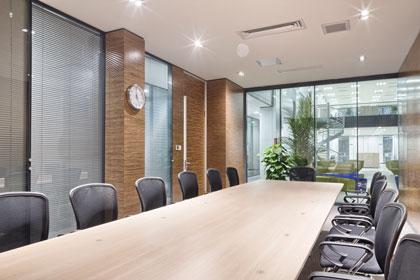In online retail, the workspace for both employees managing the digital storefront and those handling warehouse operations plays a crucial role in efficiency, productivity, and employee satisfaction. Designing a workspace that caters to the unique needs of these roles can significantly enhance overall operations and customer satisfaction. Here’s a detailed guide on how to create an optimal workspace for online store employees and warehouses:
Introduction
The landscape of online retail has transformed how businesses operate, emphasizing the need for well-designed workspaces that support both digital and physical aspects of the business. From managing e-commerce platforms to efficiently handling inventory, the workspace serves as the nerve center of operations.
Designing the Office Space for Online Store Employees
- Functional Layout:
- Open Concept: Encourage collaboration and communication among team members by adopting an open floor plan. This fosters a sense of teamwork and facilitates quick decision-making processes.
- Dedicated Areas: Designate specific areas for different tasks such as customer service, marketing, and content creation. Each area should be equipped with the necessary tools and technology to support its functions.
- Ergonomic Considerations:
- Comfortable Seating: Provide ergonomic chairs and desks to prevent fatigue and promote good posture, especially for employees spending long hours in front of computers.
- Proper Lighting: Ensure ample natural light and supplement with task lighting to reduce eye strain and enhance productivity.
- Technology Integration:
- High-Speed Internet: Stable and fast internet connection is crucial for managing online transactions, customer inquiries, and digital marketing efforts.
- State-of-the-Art Equipment: Equip employees with updated computers, monitors, and software tools that streamline tasks and support multitasking capabilities.
- Collaborative Spaces:
- Meeting Rooms: Have dedicated meeting rooms equipped with video conferencing tools for virtual meetings with suppliers, partners, and remote team members.
- Breakout Areas: Create informal spaces where employees can relax, brainstorm ideas, or have casual discussions away from their desks.
Optimizing the Warehouse Environment
- Efficient Layout:
- Flow Management: Design the warehouse layout to optimize the flow of goods from receiving to storage and shipping areas, especially for shops such as an RC store, where precision and speed in handling delicate and often specialized products are paramount. Minimize unnecessary movement to increase operational efficiency.
- Zone Designation: Divide the warehouse into zones based on product categories or order fulfillment stages to streamline picking, packing, and shipping processes.
- Safety and Accessibility:
- Safety Protocols: Implement strict safety protocols and provide training to warehouse staff to prevent accidents and ensure compliance with health and safety regulations.
- Accessibility: Ensure that goods are stored at ergonomic heights and shelves are easily accessible to warehouse personnel to minimize strain and maximize efficiency.
- Inventory Management Systems:
- Technology Integration: Utilize inventory management software and barcode scanning systems to track stock levels accurately and manage orders efficiently.
- Real-Time Updates: Enable real-time updates to inventory levels to prevent stockouts and improve order fulfillment speed.
- Climate Control and Storage Conditions:
- Temperature Control: Maintain optimal temperature and humidity levels within the warehouse to preserve product quality, especially for items sensitive to environmental conditions.
- Secure Storage: Implement secure storage solutions for valuable or sensitive products to prevent damage or theft.
Employee Well-being and Engagement
- Wellness Initiatives:
- Health Programs: Offer wellness programs that promote physical activity, mental health, and overall well-being among employees. This can include fitness challenges, meditation sessions, or ergonomic assessments.
- Healthy Snacks: Provide access to healthy snacks and beverages to keep employees energized throughout the workday.
- Employee Engagement:
- Recognition Programs: Implement employee recognition programs to celebrate achievements and foster a positive work environment.
- Feedback Channels: Establish open communication channels for feedback and suggestions from employees regarding workspace improvements and operational processes.
Sustainable Practices
- Energy Efficiency:
- Green Technology: Integrate energy-efficient appliances and lighting systems to reduce environmental impact and operational costs.
- Waste Management: Implement recycling programs and sustainable waste management practices within both the office and warehouse environments.
Conclusion
Creating an optimal workspace for online store employees and warehouses involves thoughtful planning and integration of technology, ergonomic principles, and operational efficiencies. By prioritizing employee comfort, safety, and productivity in both digital and physical environments, businesses can enhance their operational capabilities and deliver exceptional customer experiences in the competitive world of online retail.
By investing in a well-designed workspace, online stores can foster a productive and efficient workforce that drives growth and customer satisfaction in the digital age. This approach not only improves employee retention and engagement but also positions the business for long-term success amidst evolving market demands and technological advancements.



